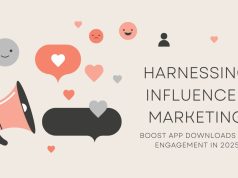In today’s competitive mobile app landscape, simply building a great product isn’t enough. To stand out, you need a strategic marketing funnel that guides users from discovery to advocacy. This comprehensive guide dives into each stage of the app marketing funnel—awareness, acquisition, activation, retention, monetization, and referral—and provides actionable tactics, metrics, and tools to optimize your strategy throughout 2024 and beyond.
Understanding the App Marketing Funnel
The marketing funnel is a framework that visualizes the user journey from first touch to loyal advocacy. For app marketers, the funnel typically includes:

- Awareness: Making potential users aware of your app
- Acquisition: Driving installs and registrations
- Activation: Encouraging users to reach a meaningful first milestone
- Retention: Keeping users engaged over time
- Monetization: Generating revenue through in-app purchases, ads, or subscriptions
- Referral: Turning satisfied users into brand advocates
Stage 1: Awareness
The top of the funnel focuses on reaching new audiences. Key awareness strategies include:
- App Store Optimization (ASO): Optimize your app title, keywords, description, and visuals to rank higher in app store search results.
- Paid User Acquisition: Leverage platforms like Google UAC, Facebook Ads, TikTok Ads, and programmatic networks to target high-intent users.
- Content Marketing & SEO: Publish blog posts, guides, and videos that address pain points related to your app’s niche. Optimize content for search to drive organic traffic.
- Social Media & Influencer Marketing: Collaborate with relevant influencers and communities on Instagram, YouTube, and emerging platforms to amplify your reach.
- PR & Earned Media: Pitch to tech blogs, podcasts, and news outlets to secure coverage and backlinks, boosting authority and awareness.
Stage 2: Acquisition & Activation
Once users learn about your app, the goal is to convert them into active users. These combined stages ensure new installs turn into first-time actions:
- Smooth Onboarding: Design an intuitive, step-by-step onboarding that highlights key features and immediate value.
- Deep Linking: Use deep links in ads and emails to route users directly to specific app content, reducing friction.
- Incentivized Installs: Offer discounts, free trials, or exclusive content to encourage downloads and registrations.
- Email & Push Automation: Trigger personalized messages based on behavior, such as welcome tutorials or feature highlights.
- First-Time User Experience (FTUE): Guide users toward completing a meaningful action—making their first purchase, creating a profile, or sharing content.
Stage 3: Retention & Engagement
Retaining users is more cost-efficient than acquiring new ones. Focus on delivering continuous value:

- Personalization: Leverage in-app data to serve tailored content, product recommendations, and push notifications.
- Gamification: Introduce challenges, achievements, leaderboards, and rewards to boost engagement.
- Community Building: Foster user communities with forums, chat features, and social integrations.
- Regular Updates & Feature Drops: Maintain excitement by rolling out new features, enhancements, and seasonal content.
- Feedback Loops: Collect NPS, reviews, and surveys to understand user needs and address pain points promptly.
Stage 4: Monetization & Referral
Converting engagement into revenue and advocacy seals the deal for long-term success:
- Flexible Monetization Models: Test in-app purchases, subscriptions, ads, and hybrid approaches to find the optimal balance.
- Personalized Offers: Use behavior-based triggers to present timely upgrades, trial extensions, and special bundles.
- Referral Programs: Encourage users to invite friends by offering mutual incentives like credits, discounts, or premium features.
- Affiliate & Partnership Channels: Collaborate with complementary apps and brands to cross-promote and expand your user base.
Key Metrics to Track
Monitor these metrics at each funnel stage to evaluate performance and make data-driven optimizations:

- Impressions & Click-Through Rate (CTR): Measure awareness campaign reach and engagement.
- Install Conversion Rate: Track installs per ad click or page view.
- Activation Rate: Calculate the percentage of users completing the FTUE.
- DAU/MAU & Retention Rate: Gauge ongoing engagement and retention cohorts.
- Average Revenue Per User (ARPU) & Lifetime Value (LTV): Assess monetization effectiveness.
- Virality Coefficient: Analyze referral program success and organic growth.
Tools and Technologies
Leverage specialized tools to streamline funnel management and analytics:
- ASO Tools: AppTweak, Sensor Tower, Mobile Action.
- Ad Networks & DSPs: Google Ads, Meta Ads, IronSource, Unity Ads.
- Analytics & Attribution: Firebase Analytics, Adjust, AppsFlyer, Amplitude.
- Marketing Automation: Braze, Leanplum, OneSignal, Airship.
- A/B Testing & Personalization: Optimizely, SplitMetrics, Taplytics.
Optimizing Your Funnel: Testing and Iteration
Continuous optimization is key to maximizing funnel efficiency:
- A/B Testing: Experiment with messaging, visuals, onboarding flows, and monetization offers.
- Behavioral Segmentation: Segment users by demographics, acquisition source, and in-app behavior for tailored experiences.
- Cohort Analysis: Compare retention and revenue across user cohorts to identify high-value segments.
- Attribution Analysis: Determine which channels and campaigns deliver the best ROI.
- Feedback-Driven Roadmaps: Prioritize feature development based on user feedback and engagement data.
Conclusion
A well-defined and optimized app marketing funnel is your roadmap to sustainable growth. By systematically guiding users through awareness, acquisition, activation, retention, monetization, and referral, you can maximize ROI at every touchpoint. Start implementing these strategies and tools today, and keep iterating based on data and feedback to stay ahead in the ever-evolving app market of 2024.







